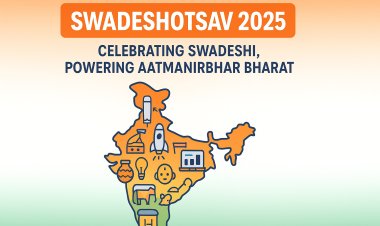Pradhan Mantri Krishi Sinchayee Yojana: Per Drop More Crop – Promoting Water-Efficient Agriculture in India
Pradhan Mantri Krishi Sinchayee Yojana (PMKSY) promotes water-efficient farming in India through micro-irrigation and sustainable practices, ensuring “Per Drop More Crop” for farmers.
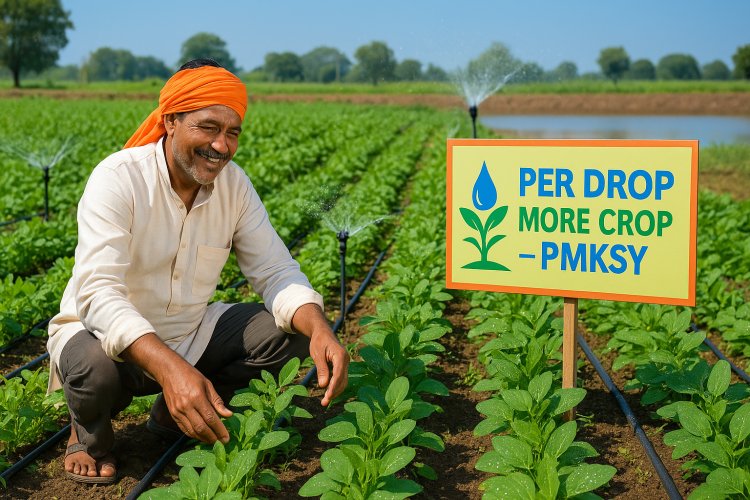
The Pradhan Mantri Krishi Sinchayee Yojana (PMKSY): Per Drop More Crop initiative stands at the heart of India’s mission to boost agricultural productivity while safeguarding its water resources. Launched in 2015, this centrally sponsored scheme emphasizes advanced micro-irrigation technology, primarily drip and sprinkler systems, to deliver more crop per drop by maximizing water use efficiency at the farm level.
Key Objectives
-
Expand Micro-Irrigation: Widen the adoption of drip and sprinkler systems across diverse cropping patterns.
-
Enhance Water Use Efficiency: Target precise and optimal water delivery to roots, crucial for drought-prone and water-scarce regions.
-
Increase Farmer Income and Crop Yields: Utilize modern irrigation to lift incomes, reduce labor, and improve productivity.
-
Promote Sustainable & Climate-Resilient Farming: Reduce water wastage, prevent soil salinity, and support climate adaptation
Major Features of the PDMC Scheme
-
Financial Assistance:
-
Direct Benefit Transfer (DBT): Subsidies disbursed straight to farmer accounts.
-
Resource Mobilization: Micro Irrigation Fund (MIF) created with ₹5,000 crore, administered by NABARD, to scale micro-irrigation through innovative projects.
-
State-Level Support: Additional subsidies/incentives by certain states to boost adoption.
Impact & Achievements
-
Area Coverage: Over 83 lakh hectares brought under micro-irrigation through PDMC (2015-2024).
-
Financial Support: ₹18,714.69 crore disbursed as Central Assistance since launch.
-
Proven Benefits:
-
Positive Farmer Perception: 90%+ adopters rate the technology as excellent or good, with strong willingness for continued use
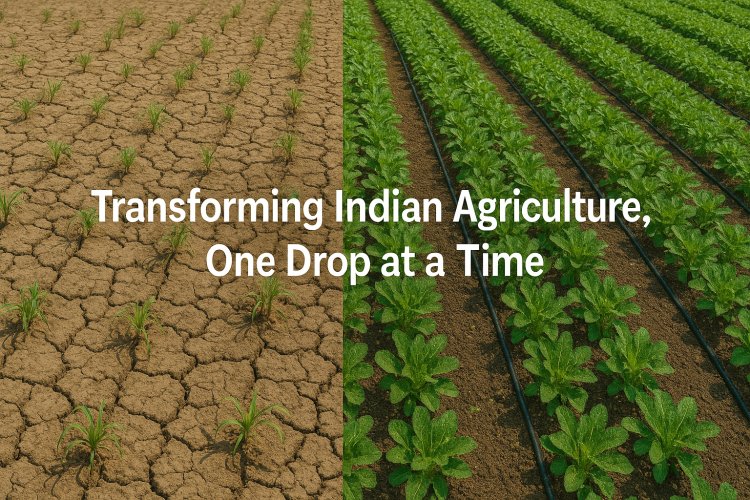
Case Study: Transforming Agriculture in Maharashtra
Background:
Maharashtra, a drought-prone state, was facing acute water shortages, leading to low yields and frequent crop failures. Through the PDMC scheme, thousands of farmers started adopting drip irrigation for sugarcane and horticulture.
Implementation:
Small and marginal farmers received a 55% subsidy, enabling them to install drip and sprinkler systems with minimal financial burden. Field officers guided them on optimal irrigation schedules and fertigation techniques.
Outcomes:
-
Yield Boost: Sugarcane yields in participating districts increased by over 25% compared to traditional methods.
-
Water Savings: Farms previously dependent on flood irrigation reduced water usage by nearly half.
-
Income Gains: Reduced input costs and better yields pushed up net profits by over 20% for most participants.
-
Scalability: Inspired by early adopters, neighboring villages also began shifting to micro-irrigation, creating a ripple effect of technology adoption.
Challenges
-
Initial Investment Barriers: Despite subsidies, smallest farmers sometimes struggle to afford upfront system costs.
-
Awareness Gaps: Limited outreach in remote regions impedes scheme adoption.
-
Maintenance Needs: Micro-irrigation systems require periodic cleaning and maintenance for long-term benefits.
-
Groundwater Dependency: In certain regions, micro-irrigation alone may not be enough if water sources are critically depleted
Summary Table: Key Facts at a Glance
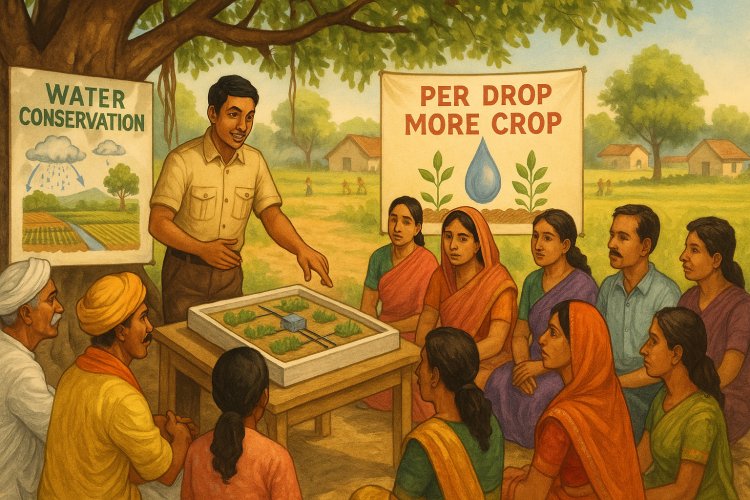
Impact of Pradhan Mantri Krishi Sinchayee Yojana (PMKSY) on Crop Yields
The Pradhan Mantri Krishi Sinchayee Yojana (PMKSY), launched with the objective of "Per Drop More Crop," is a central government scheme focused on increasing water use efficiency through micro-irrigation technologies such as drip and sprinkler systems. This initiative aims to improve agricultural productivity, conserve water, and boost farmers' income.
Evidence of Increased Crop Yields
1. Overall Productivity Gains
-
Significant Increase in Yields: Studies and field reports consistently reveal that the implementation of PMKSY—especially its Per Drop More Crop component—has led to a notable rise in crop productivity across different regions.
-
Quantitative Results:
-
Across multiple crops, approximately 55% of farmers reported increased yields, with 24% experiencing a large increase after adopting micro-irrigation techniques.
-
Crop yield increases range broadly but can be as high as 40–200% depending on the crop type and management practices.
-
Specific survey-based evidence pointed to average yield boosts of 20–30% in many beneficiary areas.
-
2. Crop-Specific Outcomes
-
Sugarcane and Wheat: Micro-irrigation adoption resulted in yield increases of 35–40%.
-
Banana: Production saw an extraordinary boost, with some areas reporting an increase of up to 216% compared to traditional irrigation methods.
-
Soybean, Broccoli, and Chilli: These crops showed notable improvements in both yields and net profits. For instance, soybean yields, as well as their quality, increased significantly—leading to higher revenues per unit area.
3. Regional Highlights & Case Studies
-
Zhabua District, Madhya Pradesh: PMKSY's adoption of drip irrigation elevated crop productivity and led to improved agricultural outcomes for farmers.
-
Haryana: Correlation and regression analyses show a strong positive impact of PMKSY on agricultural productivity, with a Pearson correlation coefficient of 0.87—demonstrating significant influence on crop yields and farm income.
-
Sulur Taluk, Tamil Nadu: Beneficiaries reported significant improvements in irrigation, water availability, and crop yield, leading to better livelihoods and economic outcomes.
-
Uttarakhand: Similar benefits were reported, including increased productivity, higher farm incomes, and improved livelihoods for participating farmers.
Additional Benefits Supporting Crop Productivity
-
Efficient Water Use: Water savings of 40–50% were commonly reported, helping to counteract water scarcity and allow for more cropping cycles.
-
Input Cost Reduction: Alongside greater yields, micro-irrigation typically leads to reduced labor and fertilizer costs.
-
Expansion in Cultivated Area: Some regions observed a substantial growth in the area under cultivation due to the more efficient allocation of water resources.
Summary Table: Yield Impact Metrics
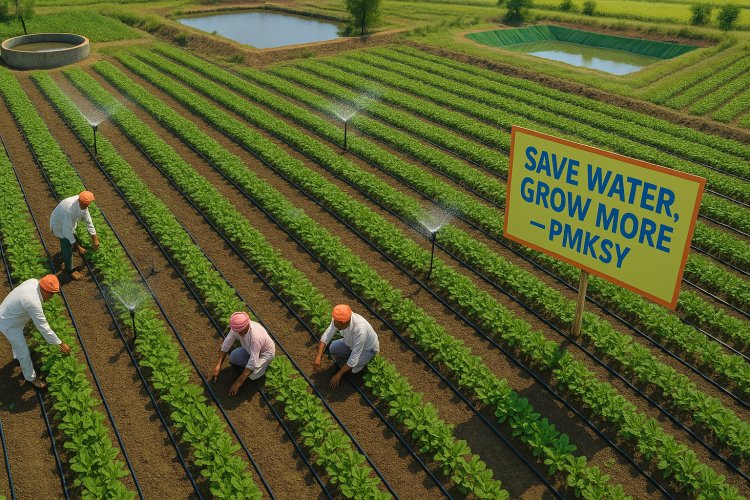
Success stories from Per Drop More Crop scheme
Success Stories from the “Per Drop More Crop” Scheme (PMKSY)
Per Drop More Crop, a flagship initiative under the Pradhan Mantri Krishi Sinchayee Yojana (PMKSY), has transformed agricultural practices across India by promoting micro-irrigation techniques. Here are notable success stories and reported impacts from different regions and farmers:
1. Takhatgadh Village, Sabarkantha, Gujarat
-
Complete Adoption of Drip Irrigation: Takhatgadh Village implemented 100% drip irrigation over 500 hectares, transitioning from water scarcity and declining yields to a model of agricultural efficiency.
-
Results: Water use dramatically decreased, and farmers reported more robust, uniform crops, less weeding, and higher efficiency. The initiative revived local agriculture and significantly improved the economic condition of its 1,489 residents (277 households), who largely depend on farming.
-
Community Action: The transformation was achieved through government support, community participation, and educational programs on water storage and minor irrigation. Takhatgadh received the Progressive Farmers Award and now stands as a model for sustainable agriculture and water conservation.
2. Individual Farmer Profitability: Haryana, Rajasthan, Gujarat
-
Personal Testimony: Farmers adopting drip irrigation under the scheme reported up to ₹1 lakh higher profit per hectare compared to traditional flood irrigation systems. This substantial increment is attributed to improved yields, reduced input costs, and better water management.
-
Crop Suitability: The benefits have been particularly notable for horticultural crops such as fruits and vegetables, but also for staples like groundnut, potatoes, wheat, and rice.
3. West Bengal – District Irrigation Plans & Crop Diversification
-
Expanding Micro-Irrigation: Projects funded by PMKSY in West Bengal cover 42 projects across 16 districts, including small tea growers. With expanded irrigation and crop diversification from staples to high-value horticulture, gross returns for small farmers have increased. This demonstrates how shifting to less water-intensive crops and integrating micro-irrigation can uplift farming communities.
4. Horticultural Crops: Bihar Case Study
-
Tejendra Ray, Saharsa (Bihar): A progressive farmer from Bihar adopted drip irrigation, leading to water savings of 40–50% and a yield increase of 20–30%. Efficient fertilizer application and minimal weed growth further improved crop quality and farmer income.
5. General Impacts Across States
-
Widespread Adoption: Over 10 million hectares have been brought under micro-irrigation. States like Maharashtra, Gujarat, Karnataka, Tamil Nadu, and Uttar Pradesh report major expansions.
-
Agronomic Benefits: Across India, farmers have reported more uniform crop growth, reduced crop failure risk, and enhanced use of inputs like fertilizers due to fertigation.
-
Economic & Environmental Benefits: The scheme has enabled substantial water savings—reported at 40–50%—alongside lower labor and energy costs, and a drop in groundwater depletion.
| Region/Farmer | Innovation | Key Impact |
|---|---|---|
| Takhatgadh, Gujarat | 100% Drip Irrigation | Solved water scarcity, higher yields/income |
| Haryana/Gujarat (farmers) | Drip vs. Flood | ₹1 lakh/hectare higher profits |
| West Bengal | Diversification, Drip | Increased returns for small tea growers |
| Tejendra Ray, Bihar | Drip on Horticulture | 40–50% water savings, 20–30% yield boost |
The “Per Drop More Crop” scheme is successfully enabling Indian farmers to grow more with less water, increase their profits, and improve resilience to climate shocks—showcasing scalable solutions for the nation’s agricultural and water challenges.
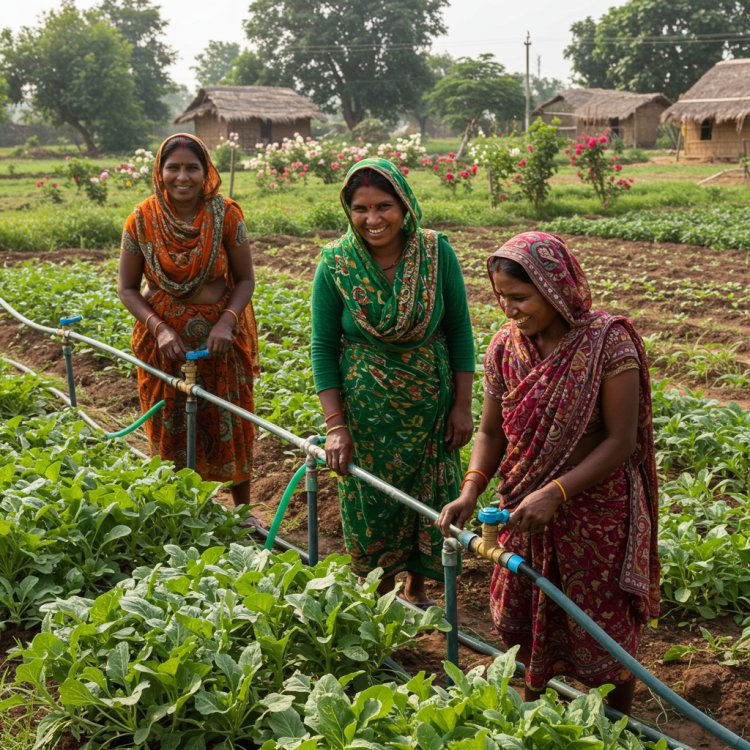
Conclusion
The Per Drop More Crop component of PMKSY is transforming Indian agriculture, especially in water-challenged areas. Backed by substantial subsidies, technical support, and a scalable model, it’s achieving remarkable gains in productivity, resource conservation, and farmer prosperity. With continued policy focus and outreach, the scheme holds immense promise for nationwide agricultural sustainability.
Implementation of the Pradhan Mantri Krishi Sinchayee Yojana, particularly the "Per Drop More Crop" micro-irrigation initiative, has consistently delivered significant improvements in crop yields and overall farm productivity. The most dramatic gains are seen in regions that faced acute water shortages, where micro-irrigation technologies have not only increased yields but also enhanced farmers’ economic stability and resource sustainability.

 Editor
Editor 

















